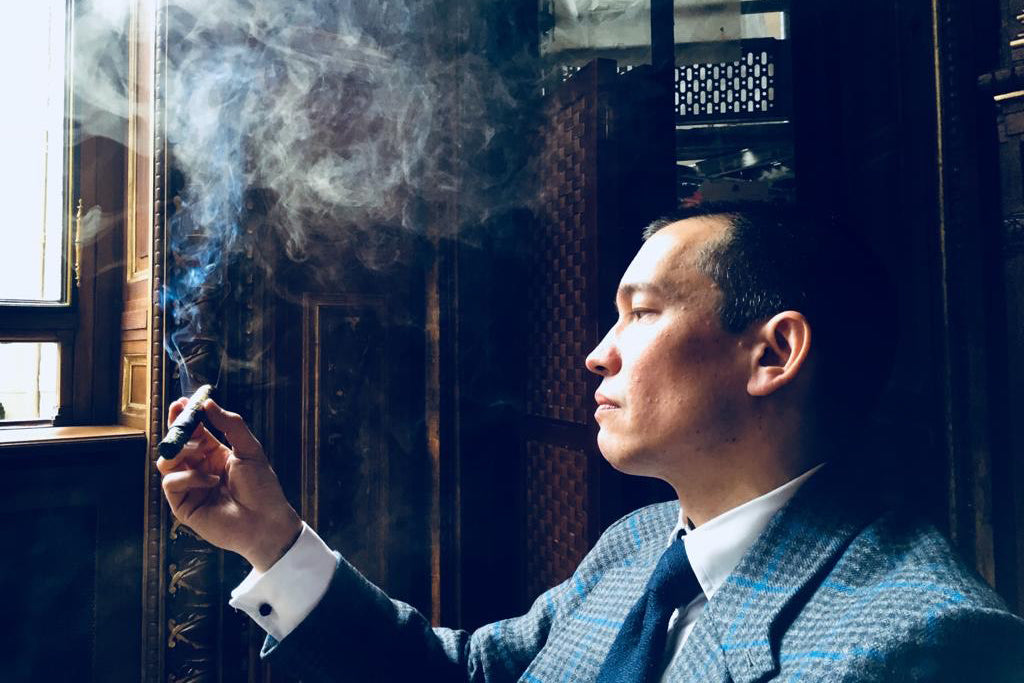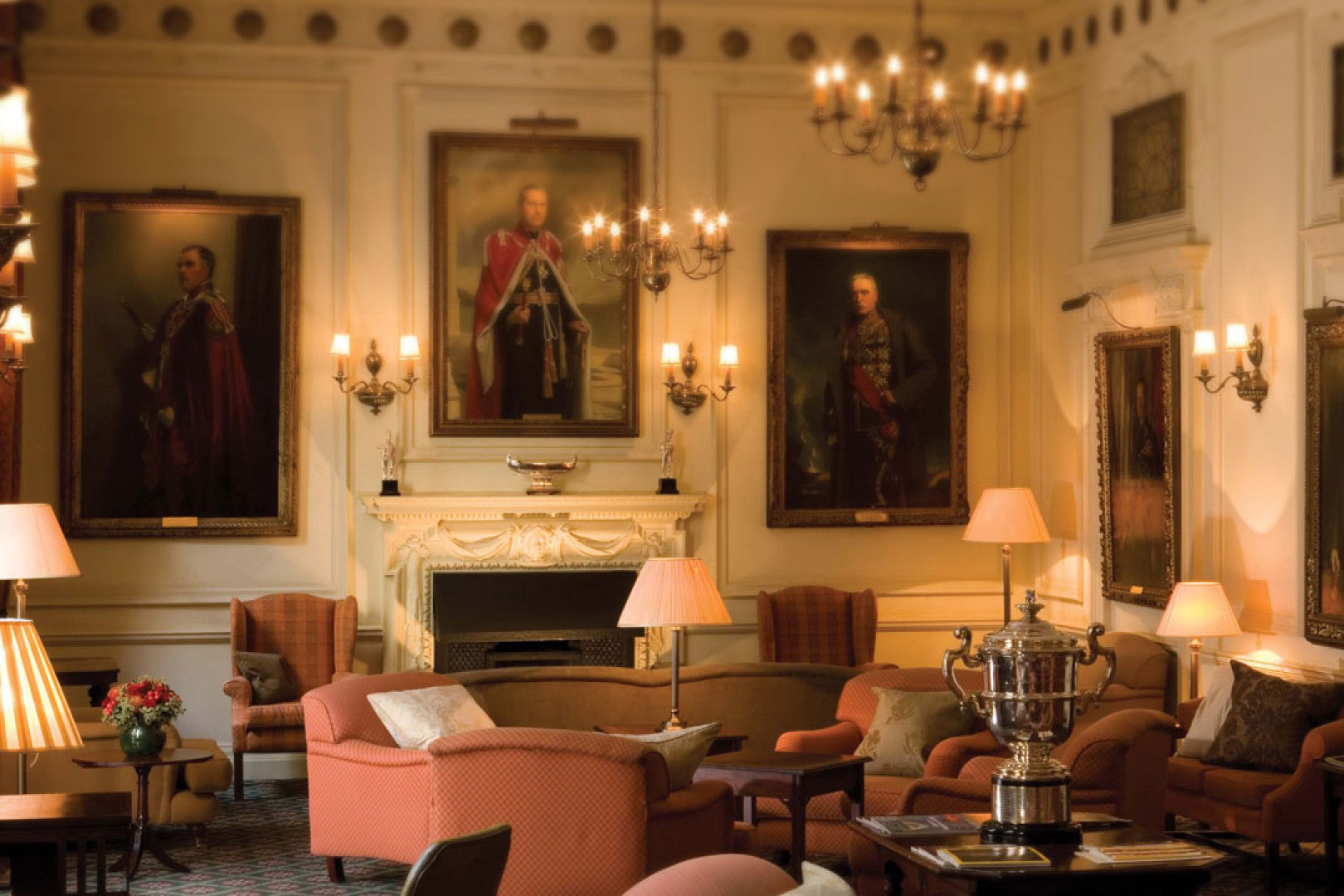Enjoying fine cigars requires time, civilized surroundings, and benefits from the pleasure of stimulating and agreeable company. It is for this reason that I turn to gentlemen’s clubs.
HISTORICAL BACKGROUND:
Private clubs have waxed and waned over the years, but the experience-led culture of the early 21st century has ushered in a flourishing of private dining, drinking and ‘sporting’ clubs. Many of the newcomers are little more than business enterprises designed to lock punters into an annuity and the right (or obligation) to eat and drink at restaurant prices. However, there are in London approximately 15-20 surviving institutions that can legitimately claim the title of a gentlemen’s club. The oldest date back to the coffee houses of the late 17th century, the most recent were established as a late as the mid-20th century.
OVERVIEW AND SEGMENTATION:
When one refers to a ‘gentlemen’s club’, one typically refers to a small number of private establishments originally designed for time-rich, upper and upper-middle class men to dine, drink in private with their friends and peers. These are concentrated for the most part along St James’ Street and Pall Mall, with a small scattering further afield in Mayfair and Belgravia. Each club claims its own identity and purpose. Some are exclusive, others less so. Some are little more than ‘member-only’ hotels, others are aristocratic follies. By most standards however there is a distinct hierarchy of clubs. One speculative take on this hierarchy would run something like this:
- TIER 1: White’s, Boodles, Brooks’s. White’s, established in 1693, is the oldest and arguably most prestigious. Aristocratic, if you like that sort of thing. Boodles and Brooks’s were established in the mid-18th century by a couple of clubmen that had been blackballed by White’s. Gambling was the main attraction in Georgian and Regency London, but things are tamer today. Boodles is Tory and country, Brooks’s is Liberal and urbane. All 3 clubs are exclusive and rather establishment.
- TIER 2: Athaeneum, Cavalry & Guards, Travellers, Turf. The Travellers traditionally serve diplomats and spies, Cavalry & Guards the most prestigious Guards regiments, Athaeneum academics and clergy. The Turf caters to a well-heeled crowd who enjoy sport (e.g. horseracing, cards, snooker). Food and wine at both the Travellers and Cavalry & Guards is excellent, served with professionalism and style in beautiful dining rooms. To this category one might add Pratt’s and Beefsteak, 2 storied and rather eccentric lunch clubs; and Buck’s, a small social club that emerged after WW1.
- TIER 3: Carlton, Garrick, Savile, Oxford and Cambridge, Army and Navy, Reform. These are all stalwarts with different personalities reflecting the members they aspire to serve. The Carlton is Tory, for better or worse. The Garrick professes its theatrical antecedents, is wealthy thanks to a generous endowment from A.A. Milne, and full of lawyers both from the inns of court and the corporate world. The Savile is arty, with a gaggle of journalists and classical musicians, but above all convivial. The Oxford and Cambridge Club is cavernous, varsity and boasts an extensive library. Army and Navy is ex-military, occupying a curious brutalist eyesore on Pall Mall, while the Reform rests somewhat precariously on its Liberal laurels.
- TIER 4 (THE REST): In and Out, Caledonian, Lansdowne, National Liberal, Oriental, RAC etc.. These clubs have suffered over time from financial difficulties, membership erosion, or an overall dilution in club direction. This has contributed to a less explicit club ethos and looseness in membership selection. While in many cases very pleasant establishments, these have a less distinct club culture as such.
- A prospective member should then investigate preferred gentlemen’s clubs with discernment and care. Pay attention to that the quality of the members, the loyalty and friendship that the members have for the club and each other, the conviviality and quality of the staff. All of these are criteria which may – over time - justify the considerable investment in time and money required to benefit fully from becoming a clubman.
The Drawing Room at the Cavalry & Guards Club (Photo credit: squaremile.com)
SELECTED PROFILES:
I’ve identified a few gentlemen’s clubs in London and Paris that appeal to me personally. Each is quite different from the other, but they share the following attributes:
- They have beautiful interiors, housed in architecturally important buildings.
- They have distinct cultures and memberships. Each one is unique.
- They have access to civilised smoking facilities (a critical attribute for any EGM Cigar aficionado).
- They are provisioned with excellent menus and curated wine lists.
BUCKS’ CLUB, 18 Clifford Street, London
During WW1, Captain Herbert Buckmaster of the Household Cavalry and some of his fellow officers vowed to create a gentlemen’s club if they lived out the war. They wanted a more relaxed environment than the classic St James’ clubs, specifying the need for an American cocktail bar, a novelty in London at that time. The officers survived the war, and Bucks’ was duly created. It was established in 1919 in an elegant Georgian townhouse on Clifford Street, Mayfair.
It is a relatively small club. Dining facilities are on the ground floor adjacent to the entrance and porter’s lounge. Upstairs there are several attractive drawing rooms on the first floor, in full view of the imposing and elegant American bar. Its first barman Pat Mcgarry – who ran the bar from its launch in 1919 through 1941 – remains a legend amongst cocktail aficionados. He is responsible for the Buck’s Fizz, which continues to be made ‘in situ’ to the original formulation.

The Dining Room at Buck's Club (Photo credit: finearchitecture.co.uk)
Dining facilities are first rate. Food is traditional and English. Bordeaux and Burgundy wines are strongly represented on the wine list. Smoking facilities are limited but adequate, in an outdoor alcove called the Buck Flair suite, a cheeky soubriquet for the Prime Minister responsible for imposing the smoking ban, Tony Blair.
CAVALRY AND GUARDS, 127 Piccadilly, London
The Cavalry & Guards is an amalgamation of 2 former clubs that had served the oldest and most prestigious British regiments since the late 19th century. It’s located in a very beautiful townhouse on Piccadilly close to Hyde Park. The club is liberally decorated with paintings, colours, artefacts, and silver attesting to the distinguished 300+ year history of the member regiments.
The bar is superb. Manned by obliging and quietly efficient staff, the bar opens into an open terrace complemented with heating and protection from inclement weather. A lovely place for a smoke. The club has a fine selection of Cuban cigars for purchase if you are without.
The dining room – located on the second floor of the townhouse – is beautifully proportioned. It has large windows overlooking Green Park and is tastefully in pale yellows and blues. The choreography of the dining room staff is a pleasure to watch. Silver gleams from every table. The wine list is diverse and sophisticated. Meals are ‘service a l’anglaise’ or silver service.
While military in aspect and efficiency, I’ve found this to be a very civilized and agreeable establishment in which to spend an afternoon.
SAVILE CLUB, 69 Brook street, London
The Savile Club was founded in 1868 originally as a bohemian counterpoint to the more traditional St James’ gentlemen’s clubs. Its original manifesto had a vaguely anarchist orientation, but its main ethos – that of ensuring the ‘Sodalitas Convivium’ has survived.
The Savile moved several times in its first 50 years of existence, but in 1927, the club settled in its present home at 69 Brook Street. The building, a combination of Nos 69 and 71 Brook Street, owes its extravagant 18th century French interior to Walter Burns, an American banker and brother in law of JP Morgan. It includes an elegant hallway and anterooms decorated with art/drawings of and by former members, a grand Napoleonic staircase and a lavish ballroom complete with ceiling frescos.

The iconic staircase at the Savile (Photo credit: www.savileclub.co.uk)
The food at the Savile is outstanding, and benefits from the creative spirit of Chef Michael James, who earned his Michelin stars working with Gary Rhodes. The service is less polished by the standards of other London gentlemen’s clubs, but the staff are charming, obliging and good humoured.
The bar is the heart of the club. You arrive, it is hard to leave. Once installed, you are guaranteed of stimulating company, good humour, and strong drink, served quickly and without fuss. There is an active cigar-smoking community within the club, with many enthusiasts, connoisseurs, and merchants as members. Naturally the outdoor environs are a delightful location in which to enjoy a smoke. A sanctuary in Mayfair.
THE TRAVELLERS, 25 Avenue des Champs Elysees, Paris
The Hôtel de la Païva is a ‘hôtel particulier’ that was built between 1856-1866 by the courtesan Esther Lachmann, better known as La Païva. Esther was born into poverty in the Moscow ghetto, but by a series of successful (!) marriages, she became a soi-disant Portuguese marchioness and a Prussian countess, this last marriage supplying the ample funds for the house. Since 1904, the house has been used by the Travellers Club of Paris.
The club is discretely located on the Champs Elysees, but once inside, the visitor enters rooms which are luxurious, elegant and decadent in every way. The club is especially famous for its beautiful staircase in solid yellow onyx, which is lined with statues in the style of the Italian Renaissance.
The traditional French cuisine is naturally exemplary. There is an excellent wine list with many cru classe wines offered below retail. The service tends towards the functional rather than the elegant, but this being Paris one must provide concessions.
Smoking facilities are glorious. The gaming rooms (snooker, backgammon) - painted in deep yellows and reds - are surrounded by tropical plants. The rooms open into an indoor quad with trees and more plants. It is a heavenly spot and recalls paintings by Le Douanier.

Richard Duckworth enjoying a cigar at the Travellers of Paris (Photo credit: Julia Duckworth)
MATCHING CIGARS: LONDON AND PARIS
Britain has had a long and deep relationship with Cuba and its cigar industry for decades. Hunters and Frankau, has been Habanos’ principal UK agents for almost 100 years. The launch of Cuaba in 1996 as a dedicated regional brand attested to this relationship and the specific Cuaba vitola referenced the UK’s love for the Figurado vitola. The Figurado and Double-Figurados were very fashionable in late 19th England. The Double Figurado, colloquially known as the Double-Ended Torpedo widens into the body of the cigar before tapering to another point. They are distinctive and fiendishly difficult to roll.
Consider the Cuaba Tradicionales (120mm, 42 ring). The challenge of rolling a Double Figurado ensures that this cigar will be made by the most experienced torcedores, guaranteeing high quality construction. The cigar is medium to full-bodied with a herbaceous, woody palate. Strength will develop noticeably through the final section of the smoke.
The French palate has traditionally preferred a less strongly flavoured cigar, and it was for this reason that the Quai D’Orsay brand was established. The impetus for the brand came from Finance Minister (and later President) Valerie Giscard d’Estaing, who sought a cigar with a light, delicate flavour to pair with French products like champagne, fois gras and so on.
The Quai D’Orsay Coronas Claro is characterized by its Claro (light brown) wrapper, and its light-tasting filler and binder leaves originate exclusively from Vuelta Abajo region. It is a light, elegant pre-dinner cigar to enjoy with a glass of white wine or champagne.
Gentlemen’s clubs are not for everyone. Some may find these environments stuffy, pretentious, or simply boring. However, if you are lucky enough to find one that you like (and that likes you!) then you should consider yourself blessed. I cannot imagine a more civilized location in which to enjoy a Cuban cigar.





